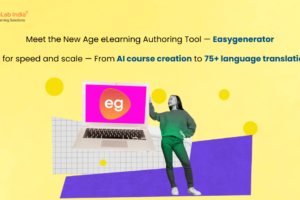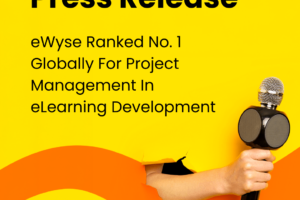
Are Content Distribution Platforms the New Curriculum Architects?
K-12 publishers have traditionally played a key role in shaping how students learned, through illustrative textbooks, relatable examples, and guided activities. Publishers curated knowledge and created learning pathways. They set the pace and scope of a curriculum. However, in the digitized education landscape, publishers’ dominance stands challenged. Digital content distribution platforms have become central to learning experiences. These platforms are more than a simple delivery channel. They determine how knowledge and skills get assimilated.
According to UNESCO, in the era of digitalization of education, a comprehensive, personalized, and democratized curriculum that is accessible to all is needed. It fosters a flexible and versatile learning environment. These help “unlock the unique potential of every learner.” But this also raises an important question: Are these platforms quietly becoming the new curriculum architects?
The Invisible Hand of Distribution
Students or even teachers no longer visit libraries for a quick reference. Even Google search has become outdated. Now, educators and learners use learning assistants or recommendation engines to determine exactly which resource to explore. These recommendation engines rely on metadata, tagging, and indexing to suggest the right resource. Advanced K-12 curriculum distribution engines use this metadata and tagging to make their learning materials discoverable.
This “discoverability” is critical for K-12 publishers. Hard-to-find learning materials are rarely used. Recommendation platforms use standardized filtering, which helps teachers find content that meets state requirements. While being helpful, this reshapes instructional priorities. Standards-aligned filterability can make certain content more popular. This directly influences what teachers choose to teach. It can also influence what is considered a priority in the classroom and boardrooms while adopting a learning platform.
A 2025 study on educational recommender systems highlighted the priorities of teachers in K-12 content selection. The study found that teachers prefer accuracy and utility over diversity and serendipity in recommendations.
Beyond Access: Platforms as Gatekeepers of Pedagogy
The design of content distribution platforms can influence how a teacher teaches. A certain design may ease the execution of certain instructional strategies, while inadvertently undermining others. The platform’s structure and capabilities effectively nudge teachers and instruction in a specific direction. For instance, a platform that is designed for a blended mode, personalized education, and assessment-driven learning is unlikely to suit pure teacher-led pedagogy.
Teachers are No Longer the “Learning Driver”
Learning analytics dashboards provide real-time insights into student performance. Teachers observe what students are doing and how well. This data dictates the next steps in the flow of the curriculum at the classroom level. Plus, personalized pathways offer students a unique learning journey. The content distribution platform makes data-backed decisions to ensure each individual’s learning path leads to established learning outcomes. This also shifts a teacher’s role in the learning process. They are no longer the sole directors of the lesson. They become facilitators who guide students through the platform’s suggested resources. AI and learning analytics on cutting-edge digital learning platforms create dynamic journeys, driving education away from the one-size-fits-all model.
K-12 Publishers Must Think of Distribution Platforms as Partners
Content distribution platforms are no longer passive middlemen. These platforms actively determine how the high-quality content is perceived by teachers, students, and stakeholders. Even if publishers create high-quality content, the platform controls how it is delivered and what pedagogical approach it supports. This can dilute or strengthen the publisher’s vision.
What if publishers partner with these platforms? Instead of designing curricula in isolation, consider designing for seamless, personalized, and inclusive delivery, leveraging the facilities of the educational content distribution platform. Publishers must move from a publishing-centric to a platform-centric mindset. The digital publishing market is shifting from independent products to comprehensive educational ecosystems that deliver tailored learning experiences. Partnering with platforms to ensure content integrity, alignment, and visibility can be instrumental in helping K-12 publishers retain their influence on how learning happens.
The Future Role of Publishers in a Platform-Driven Ecosystem
Much like teachers have embraced technology to redefine their role in learning, publishers must also accept their role as “co-architects” of curricula alongside content distribution platforms. Leveraging advanced course authoring and content distribution platforms can help you create flexible, standards-aligned content that thrives within digital ecosystems. For starters, switch to modular content that can be effortlessly customized for synchronous and asynchronous learning modes. This requires ensuring that the content integrates and adapts within these platforms.
From Publishers to Platform Partners
Learning content is the center of education; it still matters. However, it is no longer enough. The reach, influence, and pedagogical impact of learning resources hold equal importance. And now these flow through content distribution platforms. Consequently, the future of curriculum development may no longer be driven solely by books, but by algorithms, dashboards, and content pathways that deliver multimodal, student-centric, standardized content. The demand for personalized learning platforms for schools is surging. This is because such platforms can potentially improve learning outcomes by up to 30%. This presents an excellent opportunity for K-12 publishers. Speak to the experts at MagicBox to integrate standards-aligned, modular, AI-powered online curriculum platforms in your publishing workflows to stay ahead of the curve.
Read the article on How to Choose the Best Online Content Distribution Platform for Educational Publishers and Institutions
Source link



